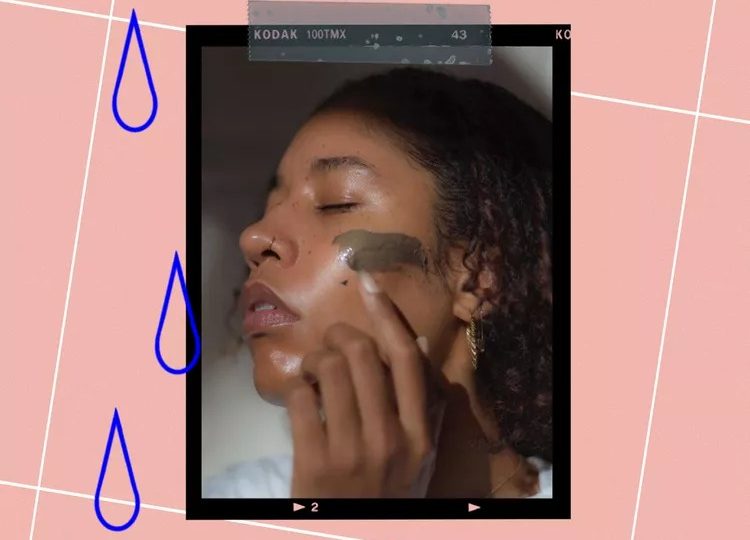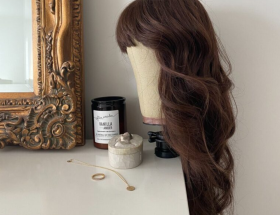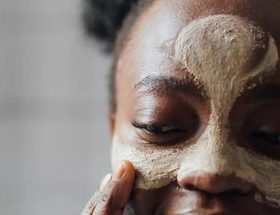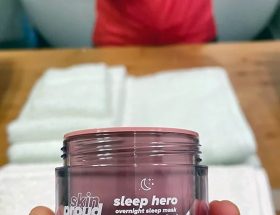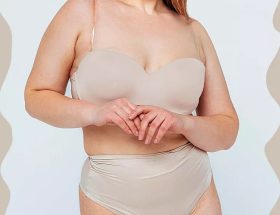AHA vs BHA What’s the Difference and Why Should You Use Them
If you want healthy-looking, radiant skin, exfoliating should be in your skincare repertoire. But getting rid of dead skin cells doesn’t just refer to those scrubby, gritty formulas we’ve grown accustomed to. In fact, there are two forms of exfoliating acids that can make sifting through the plethora of options feel more like a daunting task than a fun trip to the skincare aisle. There are AHAs and BHAs, and while neither acid is better than the other, they target different needs and skin types.
Plus, many exfoliants combine both ingredients, allowing you to tackle multiple skin concerns at once (more on that later).
FEATURED VIDEO
DIY Turmeric Face Mask To Combat Acne
True, our skin goes through a natural exfoliating process daily, but with a lack of sun protection and age, that process of shedding tends to slow down—or end altogether. So, a little help from some exfoliating products is often needed for glowy skin. Knowing exactly what these exfoliating acids are, how they differ, and exactly what their glow-worthy benefits are can help you attain the skin of your dreams. To get some intel, we tapped two board-certified dermatologists for some insight: Kenneth Howe and Orit Markowitz.
MEET THE EXPERT
Kenneth Howe is a board-certified dermatologist in NYC.
Orit Markowitz is a New York-based board-certified dermatologist at OptiSkin.
Use this easy-to-follow guide to figure out the differences between AHA and BHA and how to choose the right option for your skin.
AHA vs BHA
MICHELA BUTTIGNOL / BYRDIE
What Are AHAs?
AHA stands for alpha-hydoxy acid. “AHAs are derived from sugar cane or other plant sources, which is why they are often referred to as fruit acids,” says Howe. Among AHAs is glycolic acid, which, according to Howe, is the smallest of the AHAs, is derived from sugar cane, and is the most widely used type in skincare products. Markowitz notes that AHAs are generally recommended for normal to dry, sun-damaged skin, thanks to their ability to enhance natural moisturizing factors within the skin.
The Benefits of AHAs
AHAs have a number of benefits. For one, they target all areas of the skin. “AHAs exert benefits both to the outer layer of the skin (epidermis) and the deep layer (the dermis),” says Howe. “In the epidermis, AHAs have an exfoliative effect, increasing the shedding of dead skin cells retained at the surface. They do this by gently cleaving the retained bonds between dead skin cells. Once cut loose, those cells can then fall off, or exfoliate.”
AHAs also help stimulate collagen production, making it ideal for those wanting to reduce the appearance of fine lines. “AHAs do this both by increasing collagen synthesis by fibroblasts (the collagen-producing cells in the skin), and by decreasing degradation of the existing dermal matrix,” he says. Markowitz agrees, adding that AHAs have been proven effective in reducing the visible signs of sun damage and wrinkles (FYI: AHAs don’t replace sunscreen).
What Are BHAs?
BHA stands for beta-hydroxy acid. That ever-popular acne-busting ingredient, salicylic acid? Yep, that’s a BHA. “BHAs are organic carboxylic acids that work on skin’s surface and deep inside the pore,” explains Markowitz. “They are oil-soluble, so it’s most often preferred for normal to oily skin that’s prone to bumps, clogs, blemishes, and enlarged pores.” Howe notes that while BHAs are structurally similar to AHAs, they differ “in their position of the one hydroxyl group.”
The Benefits of BHAs
Users of BHAs will reap the skin-calming properties of the acid (it gets bonus points for being gentle enough for sensitive skin types, including those prone to redness or rosacea). This rings true with the most familiar type of BHA, salicylic acid, too. “Salicylic acid (SA) is fat-soluble, so it’s good on oily skin and gives it an enhanced ability to penetrate pores,” says Howe. “These features explain why SA is used in a lot of OTC acne products.”
He also says salicylic acid is known to fight bacteria and can be used to treat calluses and other areas of dry skin. “In the highest concentrations, it is used to treat warts. It exerts this effect in a similar way to what AHAs do—by ungluing dead skin cells from each other—but salicylic acid penetrates deeply,” he notes.
How to Choose AHA vs. BHA
When choosing between AHA and BHA, it comes down to the way in which you want the products to work along with your skin concerns. If your issues are deeper, like cystic acne or just acne in general, you’ll want to use either BHA or an AHA/BHA combination, as it will likely be able to better penetrate the issue.
For an issue like dry skin, however, AHA is your best bet. An AHA/BHA combo might work depending on your skin type, but when your goal is to exfoliate just the top layer of your skin, you should be using an AHA. Markowitz explains that AHAs and BHAs and their strengths are dependent on the mode and formula. “For example, an in-office peel could have a substantial impact on the skin with associated downtime, while an over-the-counter cream containing these ingredients will give a more limited effect that takes time to accomplish the desired result,” she says. “But given the potential drying properties of humectants, which draw moisture from within, their use should be with intent and purpose not as a daily regimen.”

